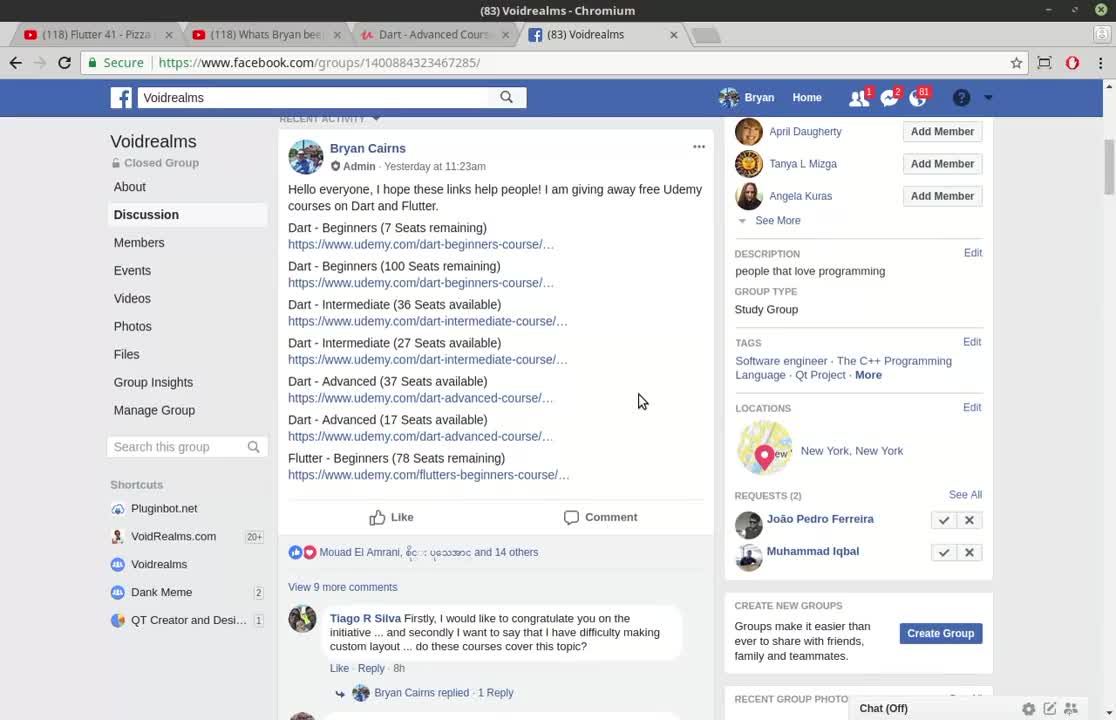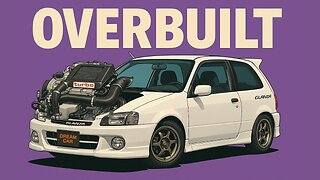Premium Only Content

FLUTTER TOTURIALS
Flutter is an open-source UI software development kit created by Google. It is used to develop applications for Android, iOS, Windows, Mac, Linux, Google Fuchsia and the web. The first version of Flutter was known as codename "Sky" and ran on the Android operating system.
Flutter apps are written in the Dart language and make use of many of the language's more advanced features.
On Windows, macOS, and Linux via the semi-official Flutter Desktop Embedding project, Flutter runs in the Dart virtual machine which features a just-in-time execution engine. While writing and debugging an app, Flutter uses Just In Time compilation, allowing for "hot reload", with which modifications to source files can be injected into a running application. Flutter extends this with support for stateful hot reload, where in most cases changes to source code can be reflected immediately in the running app without requiring a restart or any loss of state. This feature as implemented in Flutter has received widespread praise[citation needed].
Release versions of Flutter apps are compiled with ahead-of-time (AOT) compilation on both Android and iOS, making Flutter's high performance on mobile devices possible.
Flutter engine
Flutter's engine, written primarily in C++, provides low-level rendering support using Google's Skia graphics library. Additionally, it interfaces with platform-specific SDKs such as those provided by Android and iOS.[9] The Flutter Engine is a portable runtime for hosting Flutter applications. It implements Flutter's core libraries, including animation and graphics, file and network I/O, accessibility support, plugin architecture, and a Dart runtime and compiles toolchain. Most developers will interact with Flutter via the Flutter Framework, which provides a modern, reactive framework, and a rich set of platform, layout and foundation widgets.
Foundation library
The Foundation library, written in Dart, provides basic classes and functions which are used to construct applications using Flutter, such as APIs to communicate with the engine.
Widgets
UI design in Flutter involves using composition to assemble/create "Widgets" from other Widgets. The trick to understanding this is to realize that any tree of components (Widgets) that is assembled under a single build() method is also referred to as a single Widget. This is because those smaller Widgets are also made up of even smaller Widgets, and each has a build() method of its own. This is how Flutter makes use of Composition.
The docs say: " A widget is an immutable description of part of a user interface." A human being will tell you it's a Blueprint, which is a much easier way to think about it. However, one also needs to keep in mind there are many types of Widgets in Flutter, and you cannot see or touch all of them. Text is a Widget, but so is its TextStyle, which defines things like size, color, font family and weight. There are Widgets that represent things, ones that represent characteristics (like TextStyle) and even others that do things, like FutureBuilder and StreamBuilder.
Complex widgets can be created by combining many simpler ones, and an app is actually just the largest Widget of them all (often called "MyApp"). The MyApp Widget contains all the other Widgets, which can contain even smaller Widgets, and together they make up your app.
However, the use of widgets is not strictly required to build Flutter apps. An alternative option, usually only used by people who like to control every pixel drawn to the canvas, is to use the Foundation library's methods directly. These methods can be used to draw shapes, text, and imagery directly to the canvas. This ability of Flutter has been utilized in a few frameworks, such as the open-source Flame game engine.
Design-specific widgets
The Flutter framework contains two sets of widgets that conform to specific design languages. Material Design widgets implement Google's design language of the same name, and Cupertino widgets implement Apple's Human Interface Guidelines iOS design.
-
 1:06:36
1:06:36
Wendy Bell Radio
11 hours agoPet Talk With The Pet Doc
59.6K28 -
 30:58
30:58
SouthernbelleReacts
2 days ago $8.30 earnedWe Didn’t Expect That Ending… ‘Welcome to Derry’ S1 E1 Reaction
38.7K10 -
 13:51
13:51
True Crime | Unsolved Cases | Mysterious Stories
5 days ago $19.36 earned7 Real Life Heroes Caught on Camera (Remastered Audio)
56.6K12 -
 LIVE
LIVE
Total Horse Channel
17 hours ago2025 IRCHA Derby & Horse Show - November 1st
102 watching -
 4:19
4:19
PistonPop-TV
6 days ago $8.03 earnedThe 4E-FTE: Toyota’s Smallest Turbo Monster
44.8K1 -
 43:07
43:07
WanderingWithWine
6 days ago $5.14 earned5 Dreamy Italian Houses You Can Own Now! Homes for Sale in Italy
32.9K9 -
 LIVE
LIVE
Spartan
1 day agoFirst playthrough of First Berserker Khazan
81 watching -
 28:01
28:01
Living Your Wellness Life
2 days agoTrain Your Hormones
25.8K2 -
 43:28
43:28
The Heidi St. John Podcast
1 day agoFan Mail Friday: Faith Over Fear and Finding Strength in Every Season
15.7K -
 1:05:30
1:05:30
SGT Report
1 day agoTHE HORRIBLE TRUTH ABOUT EVERYTHING -- Harley Schlanger
59.1K99